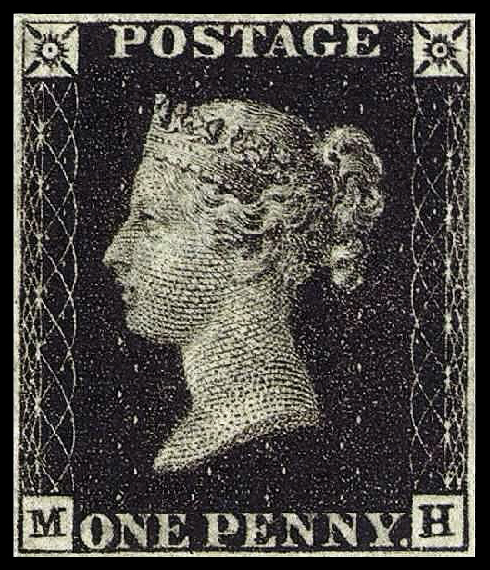See this page as a slide show
CT320 IP Addresses
Port 49757
198.51.100.135
Port 22
203.0.113.42
Format
An IPv4 (as opposed to the newer IPv6) IP address is
a 32-bit quantity which represents a host on the internet.
It is usually represented as four numbers,
each 0–255, separated by dots. For example:
198.51.100.135
- There are 232 (~4.2 billion) IP addresses.
- This is a ridiculously large number.
- We’re running out.
Grouping
- It is often useful to group IP addresses.
- For example, Hewlett-Packard owns all the 16.whatever IP addresses.
🐷
- Yeah, well, the DoD owns nearly five percent of all IP addresses!!
🐷🐷🐷🐷🐷
- What notation shall we use, other than “whatever”?
Old-Fashioned Classful Addresses
How address ranges used to be allocated
| Class | Pattern | Networks | Hosts/network | Addresses |
|---|
| A | 0nnnnnnn hhhhhhhh hhhhhhhh hhhhhhhh | 27 | 224 (~16 million) | 0–127.whatever |
| B | 10nnnnnn nnnnnnnn hhhhhhhh hhhhhhhh | 214 | 216 (65536) | 128–191.whatever |
| C | 110nnnnn nnnnnnnn nnnnnnnn hhhhhhhh | 221 | 28 (256) | 192–223.whatever |
- Class A: IBM (380,000 employees in 2016)
or the U.S. Postal Service (639,789 employees in 2017)
- Class B: CSU (33,198 students in 2016)
- Class C: Jack’s house (20 hosts in 2017)
List of assigned class A networks
Classful no good
- Originally, three classes:
- Problem
- Classes too rigid (C too small, B too big)
- Solution
- Rather than having only three possibilities:
- 8-bit class A network
- 16-bit class B network
- 24-bit class C network
- Have a variable-sized network:
- 30 bits, 23 bits, you name it
Masking
- Consider a small business that has been allocated the addresses
198.51.100.0 – 198.51.100.255.
- First 24 bits are the Network ID (the neighborhood)
- Last 8 bits are Host ID (the street address)
- Netmask: FF FF FF 0016
(11111111 11111111 11111111 000000002)
- The 1 bits represent the network
- The 0 bits represent the host
- All the 1 bits in the subnet mask are on the left
- What a stupid system!
- Still used by some Linux networking commands
CIDR
- Subnet masks are old-fashioned
- Use CIDR (Classless Inter-Domain Routing) instead.
- prefix/length
- 198.51.100/24 (omit trailing zero bytes)
- 198.51.100.0/24 (also ok)
- 198.51.100.42/24 (invalid—the last 8 (32−24) bits must be zeroes)
- Does not have to be on byte boundaries.
- 198.51.100.128/27 is acceptable.
- Represents addresses 198.51.100.128 through 198.51.100.159.
- How many hosts is that?
CIDR example
Consider the CS network, 129.82.44/23
- 10000001.01010010.00101100.00000000 = 129.82.44.0
- Make the left 23 bits, the network, red,
and the remaining bits, the host, blue.
- 10000001.01010010.00101100.00000000 = 129.82.44.0
- Now, change all the blue bits from 0 to 1:
- 10000001.01010010.00101101.11111111 = 129.82.45.255
∴ 129.82.44/23 is the range of addresses 129.82.44.0 … 129.82.45.255.
It contains 129.82.44.whatever and 129.82.45.whatever,
for 512 addresses total.
Special classes of addresses
$ host art
art.edu has address 3.233.19.193
art.edu mail is handled by 0 us-smtp-inbound-1.mimecast.com.
art.edu mail is handled by 0 us-smtp-inbound-2.mimecast.com.
$ host denver
$ host tuba
Host tuba not found: 3(NXDOMAIN)
- CSU: 129.82/16
- Documentation:
192.0.2/24, 198.51.100/24, 203.0.113/24
- Private use:
10/8, 172.16/12, 192.168/16
- CSB 315: 192.168.110/24, a subset of 192.168/16
- CS printers: 10/8; only our subnet can access them!
I’m sorry that CSU addresses begin with 129, which is so similar
to the 192 that begins one form of private networks.
Stupid IP Address Tricks
These all work in my browser:
Avoid actual links, as the linkcheck program will complain.
http://www.cs.colostate.edu
http://%77%77%77%2e%63%73%2e%63%6f%6c%6f%73%74%61%74%65%2e%65%64%75
http://129.82.45.114
http://0x81.0x52.0x2d.0x72
http://0201.0122.055.0162
http://2169646450
http://0x81522d72
http://020124426562



